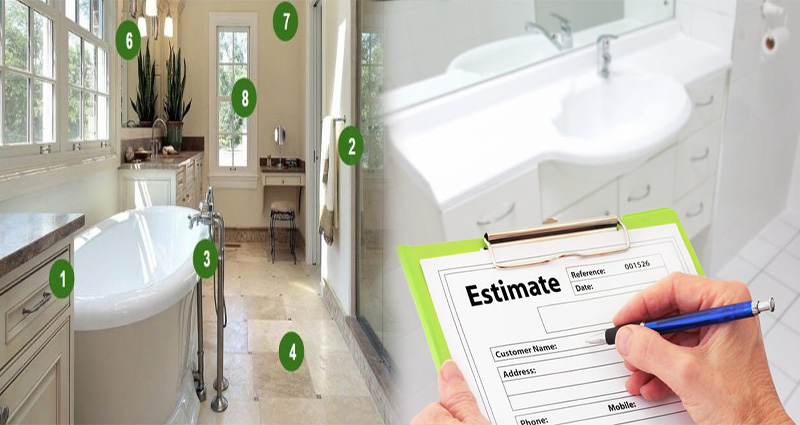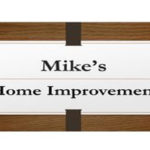If you’ve ever wanted to remodel your bathroom, you’re not alone. Indeed, Americans spent $36 billion on home improvement projects in 2018, according to the Remodeling Impact Report by the National Association of Realtors®. That’s a lot! But even though many people want to improve their homes and get more value out of their investments as renters or homeowners, they don’t always know where to start when it comes to estimating their costs—especially if they’re doing an entire gut renovation or adding a steam shower. The good news is that there are some simple ways that most people can estimate how much they’ll spend on any given project before they begin work (and after). In this blog post we’ll cover how much it costs to renovate an existing bathroom and how different types of renovations will affect your budget (and timeline).
Budget for a bathroom renovation
Budgeting for a bathroom renovation is much like budgeting for any other home improvement project. You’ll need to estimate the cost of materials, labor and other expenses like permits and inspections. You also need to factor in unexpected costs that can come up during the process–like replacing your water heater when it breaks down during demolition work or finding mold behind your shower wall that no one noticed before tearing out the old tile.
Budgeting is an important part of planning any kind of renovation project because it helps you make decisions about what upgrades are worth spending money on (and which ones aren’t). In addition, having a firm idea about what your budget will be makes talking with contractors easier; they’ll know exactly how much room they have for negotiation if something comes up during construction that requires extra funds from you or them!
Tools you’ll need
- Hammer
- Drill
- Saw (to cut the tiles)
- Level (to make sure things are level)
- Tape measure and pencil to mark off measurements on your walls, floor and ceiling so you can get an accurate sense of how much space you have to work with. You’ll also need these tools for measuring the dimensions of cabinets, fixtures, etc., so they fit properly in their designated spots.
Remodeling an existing space
Remodeling an existing space is cheaper than building a new one. If you’re remodeling a bathroom that has been updated in the past, you may be able to reuse old materials. However, keep in mind that most contractors will charge extra if they have to demolish part of your bathroom before beginning work on it–so factor this into your budgeting process as well!
Remodeling a new space
Remodeling a new space is more expensive than remodeling an existing space. New spaces are not as efficient as existing ones, so they require more time and effort to design, install and maintain.
- Design: The design process can be lengthy when the walls don’t already exist. You’ll have to consider how many fixtures you want in each room, where they should go and how they should look (for example: do you want a shower or tub?). You may also have issues with plumbing lines running under your flooring or through walls. This means that any changes made during this process will take even longer than usual because contractors will need time for digging equipment before any construction begins on top of them!
- Installation: When installing fixtures such as sinks/tubs/showers etc., there are many steps involved including removing old products while ensuring everything fits correctly into place once installed (which isn’t always easy). Most people aren’t familiar with how these types of things work so some trial-and-error may be involved until everything fits perfectly inside their newly renovated bathroom space!
Remodeling a tiled shower
Tile is one of the most common bathroom materials, and it can be installed on the walls and floor. Tile comes in a variety of patterns, colors, and designs that allow you to create an elegant or casual look for your bathroom.
- When considering tile for your remodel project, keep these things in mind:
- Tiles are available in many different shapes and sizes–you can choose between square tiles or rectangular ones; large-sized tiles (sometimes called “flooring”) or small ones; even hexagonal shapes!
- There are also many different materials used to make tiles including porcelain, stone (marble), granite and glass mosaics which each offer their own unique aesthetic appeal depending on what style you’re going after.
Remodeling sloped floors and rimless toilets
- Remodeling sloped floors and rimless toilets
Remodeling a bathroom can be tricky, especially if you’re working with a sloped floor or a rimless toilet. To make up the difference in height between your new flooring and your old toilet, you can use shims under the base of each leg or simply purchase an inexpensive toilet seat riser to raise your bowl by about 1/2 inch.
Changing out the tub/shower to a steam shower
If you’re looking to upgrade your bathroom, but don’t want to make any major changes, a steam shower might be the perfect solution. A steam shower is a great way to freshen up your bathroom without making drastic renovations.
You’ll need a contractor who specializes in installing steam showers if you want one installed properly and safely. They will also be able to determine if your current structure has enough room for this type of installation and offer suggestions on how best to use existing space so that everything fits correctly when it comes time for installation day!
If you decide on installing one yourself, then buying all materials separately may be best because there are many different options out there depending on what type of look/feel you’re going after (think: glass vs acrylic). However if someone else is doing all work then try buying pre-made kits instead since they tend not cost much more than individual parts anyway – plus they come with instructions too!
To get an accurate estimate, you need to know what kinds of materials and supplies you’ll need, how much labor will cost and how much time it will take.
To get an accurate estimate, you need to know what kinds of materials and supplies you’ll need, how much labor will cost and how much time it will take. Materials include the fixtures that go into your bathroom such as sinks, tubs and toilets; as well as cabinets and countertops if you’re adding them. Supplies include any items that aren’t permanently affixed in place but still need to be purchased for installation purposes–like faucets or showerheads.
Labor includes not only the work done by professionals but also any DIY work (which can end up saving money). If there are no major structural changes being made to the bathroom itself (like removing walls), then most contractors will charge per hour rather than per project completion date; however some may offer flat rates depending on their experience level with similar projects at other clients’ homes or businesses
With all the different factors involved in estimating a bathroom remodel, it can be difficult to get an accurate estimate. The best way to do so is by keeping track of all your costs and multiplying them by the number of days it takes for each phase of your project. This will give you an idea of how much money it will take before starting anything on site!











